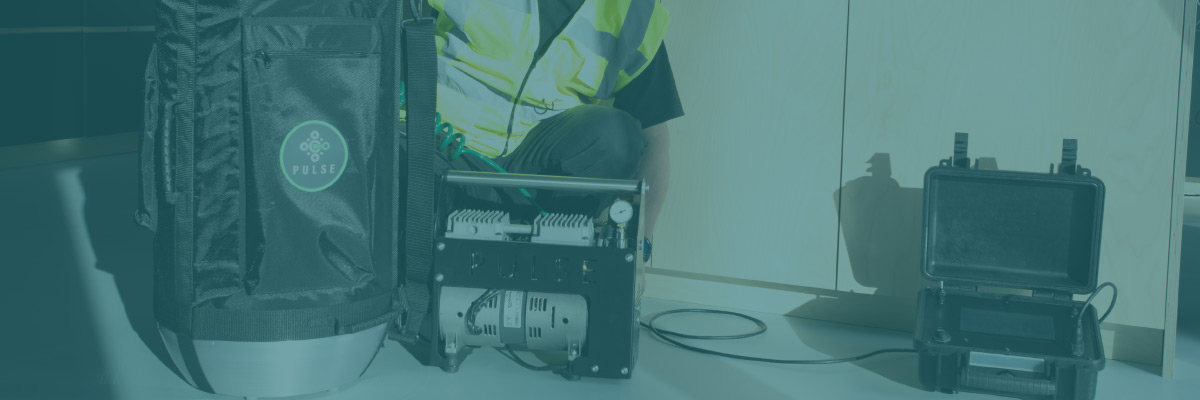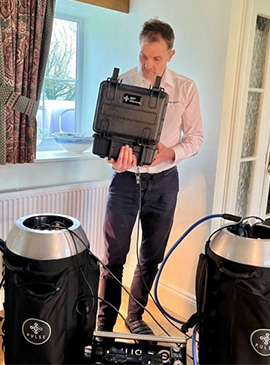What is Background Ventilation Testing?
Background ventilation testing is the process of assessing an existing property for the Air Change Rate (ACH) to identify whether that property has adequate ventilation.
Background ventilation testing is most commonly used for retrofit projects, to satisfy the requirements under pathway A and B of PAS 2035 and to offer an alternative method of satisfying pathway C. However, it can also be carried out for other purposes, such as extension or conversion work.
It’s important that dwellings are correctly assessed for background ventilation as improvements to a property can decrease air change rate. Equally, the property may already have plenty of background ventilation and not assessing this could results in the installation of unwanted and unnecessary background ventilators.
Becoming a Background Ventilation Tester is an excellent upskill for current Retrofit Assessors or existing Airtightness testers. However, it is also relevant for Retrofit Coordinators, Installers and Designers.
Background Ventilation and L1 Airtightness Training
Elmhurst’s new, unique course offers a streamlined approach by combining competency in Background Ventilation Testing with a comprehensive qualification in Level 1 Airtightness Testing. This cost effective training option requires no previous experience.
£1,750 + VAT
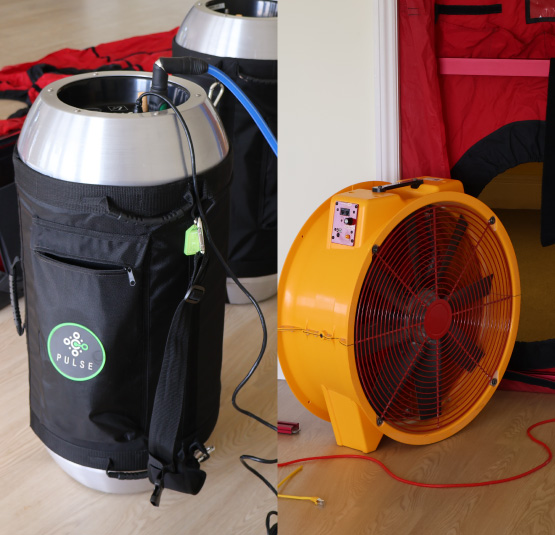
Background Ventilation Training
Learn how to carry out background ventilation testing for pathway A and B retrofit projects (existing buildings) with our two day course – delivered through on demand and classroom based learning. Suitable for those with no prior experience.
£895 + VAT
Already an Airtightness Tester? Expand your services in to Background Ventilation Testing with our fast-track upskill course.
£495 + VAT
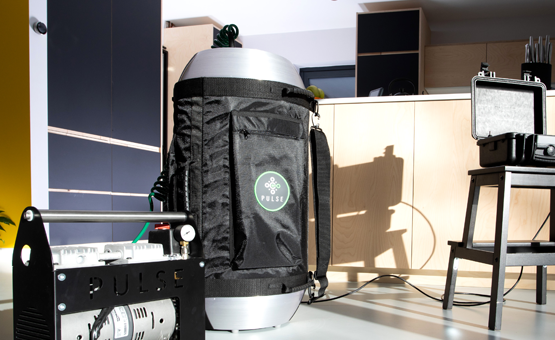
Why become an Background Ventilation Tester?
There are a whole host of benefits to becoming a competent Background Ventilation tester:
✅ Ideal upskill for Retrofit Assessors or current Air Tightness testers
✅ Add value to your retrofit services! Satisfy the requirements for background ventilation under PAS 2035 in-house, without having to enlist the services of another energy professional.
✅ Certificate of Competency in Background Ventilation Assessment of Existing Buildings
✅ 10 Hours CPD
✅ Become a member of the Elmhurst Airtightness Scheme (EAS)
Once you’ve completed your training course you can join the Elmhurst Airtightness Scheme (EAS). The scheme offers fantastic benefits for members, such as:
- PI and PL insurance
- A secure lodgement portal
- Dedicated technical support.
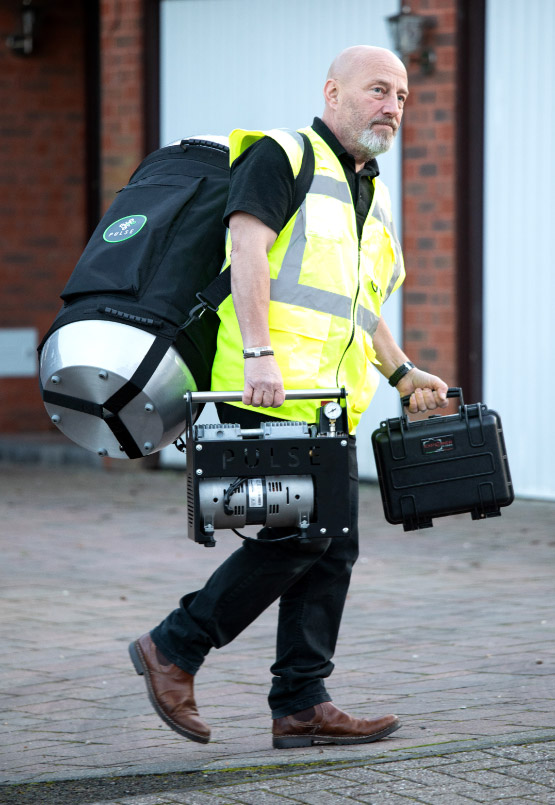
What's the process for Background Ventilation testing?
The test method for background ventilation is The Installation Assurance Authority (IAA) guidance.
The test method requires that whole house and bedrooms tests are carried out. Preparing the property for the test includes closing trickle vents and turning off or closing any other vents or ventilation systems but not sealing them, as you would in an air pressure test. This gives an indication of the buildings worst case background ventilation.
The test can be conducted by using Pulse or Blower Door test equipment, however the test does lend itself to the Pulse equipment which allows for the testing of the door undercuts in bedroom tests where a blower door would need to be installed.
On our Background Ventilation Training Course you will learn how to safely and correctly conduct a Background Ventilation Test and understand the equipment/software used to conduct these tests.
GO TO COURSE >There are no pre-requisites to attend Elmhurst’s Background Ventilation training course to become a Background Ventilation Tester. However, the course is suited to current Retrofit Assessors, Retrofit Coordinators, Installers, Designers and existing Airtightness Testers.
Please note: This course is not suitable for delegates wanting to complete Airtightness Tests. Please refer to our Air Tightness Training for further information on becoming an Air Tightness Tester.
This is difficult to answer as it varies from test to test. Each quotation will be unique and dependant on the size and complexity of the building, as well as the number of tests to be carried out on the same site.
Background ventilation testing is usually carried out for Retrofit work under PAS 2035 work, however it can also be carried out for other purposes such as conversion or extension work.
To carry our Background Ventilation Testing you will need to attend a two day, classroom based course.
Candidates that have successfully completed a competency and practical test can then go on to join a Competent Person Scheme, such as Elmhurst’s.
Becoming a Background Ventilation Tester will enable you to assess the Background Ventilation of Existing Dwellings.
Yes – Once competent, to carry out Background Ventilation testing for PAS 2035, the tester must be a member of a Competent Person Scheme, such as Elmhurst’s, as well as the IAA.
More information can be found on the IAA Scheme here.
If you wish to carry out background ventilation testing for other purposes, such as conversion or extension work, the IAA membership is not required.
Why choose Elmhurst for Background Ventilation training?
Quality lies at the heart of what we do, and it all starts with the training that we offer. We strive to equip individuals with the skills and knowledge required to deliver quality property and energy assessment services. Since 1993 we have trained thousands of individuals and have evolved our courses to reflect the changing landscape of training delivery and energy assessment.
✅ Leave feeling confident– leave feeling confident that you can put theory into practice
✅ Learn at your own pace– our courses cater for those completely new and familiar with energy assessment
✅ An engaging learning experience– Our trainers have the practical experience and know how to deliver a truly engaging learning experience
✅ Support beyond the training– As the UK’s largest government approved energy assessor scheme, we can provide technical support to you, not only during your training, but also long after you’ve completed it
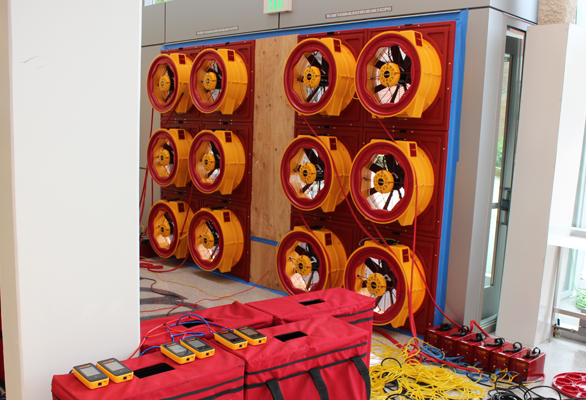
Become a member of the Elmhurst Airtightness Scheme
Once you have successfully completed the Background Ventilation training, you can apply to join the Elmhurst Airtightness Scheme (EAS). Being a member of a scheme provides reassurance to clients that you are trained and competent to provide background ventilation tests.
FIND OUT MORE
